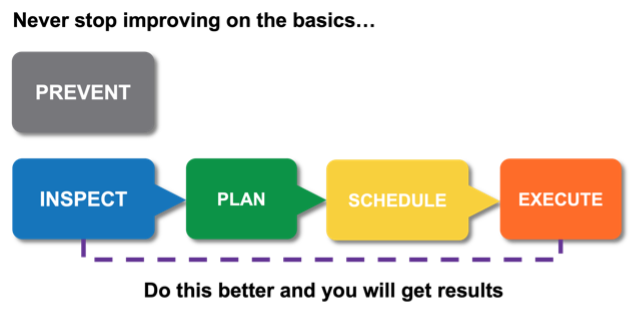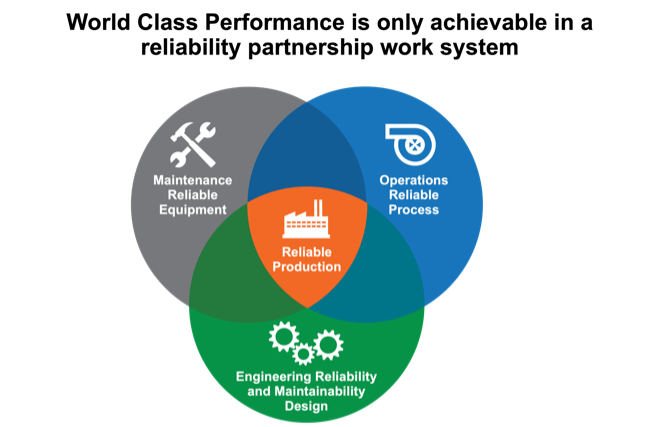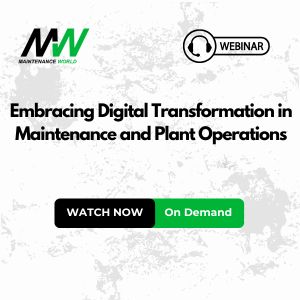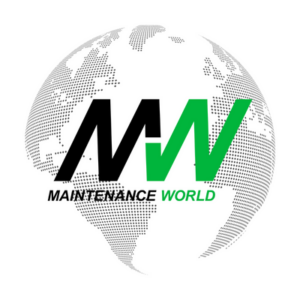Creating a Reliability Culture with a Belief-Driven Maintenance Strategy: Beliefs 6-10
Christer Idhammar, Founder, IDCON INC
Posted 4/15/2025
Excellent, consistent, and long-term leadership with well-defined and documented processes and the right people in the right positions are essential success factors for lasting results for any improvement initiative an organization undertakes, including improvements of Reliability and Maintenance performance.
As a leader you need to create an organization that will follow you to make your vision, or future organization, a reality. In my experience as a leader I have found it very important to develop and communicate your beliefs to your organization. These maintenance management strategy beliefs will then be guiding your organization on their journey towards your goals.

Belief 6
Busy people are not productive unless they work on the right thing.
Measurement methods such as time studies and “Wrench time” can therefore not be right to do.
In fact, an indication of a very good maintenance organization is that people are less busy with “wrench time” between shutdowns. Instead, more time is spent on Root Cause Problem Elimination (RCPE) and preparing for the next shutdown. This can be done because there are very few breakdowns. If work is planned and then scheduled people will work on the right things, so it is more important to measure the effectiveness of the process people work in, then to measure the symptoms of the process people work in.
Belief 7
People do not mind change, but do not like to be changed.
My experience is that people do not like, and seldom buy into, changes handed down to people from above without explanation of what, why, and how. But if people are well informed and listened to, they will better understand and accept the reason for change. Repeated information, education, and training are essential elements of any improvement initiative involving people.
Belief 8
Basic maintenance processes must be in place before implementing more advanced tools.
Many organizations start new improvement initiatives before they are ready. Some examples include:
- Starting Reliability Centered (RCM) Training and analyses before they are ready because they are still too reactive and they are reactive because they do not the very basics well.
- Train craftspeople in precision maintenance training when they work in a reactive process. When most work is urgent, it will lead to there not being enough time to use the good skills they learned. In turn, this leads to disappointment and lost skills.
- Upgrading to an advanced Computerized Maintenance Management System (CMMS) before the organization is ready. Good advice is to always start with designing the processes first and then implementing the new system.

Belief 9
Rapid and sustainable change does not exist in maintenance because the change process is “90%” about people and behaviors.
Is rapid change possible in a maintenance organization? If change is equivalent to sustainable improvements the answer to this question is no.
Why? Because my experience has shown that 90% of improvement of maintenance performance is about people and 10% is about technology and processes.
This does not mean that technology and design of processes are not important. It is very important to design the right processes for people to enable them to become more productive. But that is the easy part in an improvement initiative. This part might take only five to ten percent of the effort in time and money.
What takes time is to make an often-undisciplined reactive organization to work in a disciplined process. Your organization might have many maintenance heroes who value the recognition they receive when they repair a broken-down piece of equipment. They might also be rewarded by overtime pay because of the logic that equipment is more likely (76%) to break down when the full maintenance crew is not in the mill.
Technology is also very important. To acquire the right tools for vibration analyses, precision alignment, handheld computers, etc. is easy because most maintenance people love gadgets and tools. Again, to implement these tools so that they are used in a disciplined process is often a challenge. It might be basic things like taking action to plan and schedule correction of failures in equipment discovered early by any of these tools. To make that process work is what takes time. It might include changing the mindset of requestors of maintenance work to not request a higher priority on work than necessary because it will drive the organization into a reactive mode. It might require updating bills of materials so planners can plan more efficiently. It will require a close partnership between operations and maintenance so priorities of work are done based on what is most important for the business. These are just some few examples to demonstrate that 90% of effort to improve maintenance performance is about people.
During all my years in the reliability and maintenance management business I have seen so many well-written plans and Power Point presentations but often saw lacking true implementation of these plans. Most organizations know what they need to do, so that is not the big issue.
The big issue is to make the system and processes you designed and agreed upon work. I call this phenomenon the Know-Do Gap. I have also worked with many organizations that have reached excellence in reliability and lower costs.
The common denominator for these organizations is that they close the Know-Do Gap, they think long term and clearly define the best practices, they consistently communicate these practices, they provide the right tools, and consistently execute these practices long term.
Belief 10
Operations, Engineering, Maintenance, and Stores must work in a partnership to reach excellence.
Most organizations we work with think they work in a close partnership among these departments, but not many do. This is often reflected in in the way performance indicators are used. Operations are measured by the quality tons produced, maintenance by the cost of maintenance, engineering by being on-time and within budget for projects, and stores by turnover and value of inventory. These examples of performance indicators do not promote a partnership among the departments.
If you agree to belief number 1: “Cost reduction does not generate improved reliability. Improved reliability results in lower cost”. Then you have set the foundation to a reliability driven organization and the common lagging performance indicator should be production reliability. Production reliability is how many quality tons manufactured divided by capacity tons: or Quality performance x Time performance x Speed performance. If production reliability is used as the common goal for operations and maintenance it will drive a different mindset. E.g. it will be less important to record lost production by department. Instead the organization would focus on eliminating the root cause of the problem. It will also lead to that, as a leader, you would focus more on development and documentation and implementation of the processes that drives better reliability followed by lower costs, instead of focusing only on the cost of maintenance.
The manufacturing cost per ton will override the maintenance cost per ton. This will encourage operations employees to participate in maintenance work and vice versa. As an example: Where it is practical, operators will do a big part of basic inspections and essential care of equipment. Shutdowns can be changed but only as a joint decision between operations and maintenance etc.
Stores will not only be measured by inventory reductions in money. Instead inventory reductions will be done concurrent with measurement of service level to maintenance (right item available at the right time.)
Engineering will include reliability and maintainability considerations in specifications and design of equipment and make procurement decisions based on life cycle cost over 10 years or more.
If you agree with belief 10 you cannot only say that: “now we shall all work together as equal partners in a reliability partnership” , you need to define, document and communicate your beliefs, and then design all work processes according to these beliefs.

Learn more about building a reliability culture in the next Beliefs article, coming soon!

Christer Idhammar
Christer Idhammar started his career in operations and maintenance 1961. Shortly after, in 1985, he founded IDCON INC in Raleigh North Carolina, USA. IDCON INC is now a TRM company. Today he is a frequent key note and presenter at conferences around the world. Several hundred successful companies around the world have engaged Mr. Idhammar in their reliability improvement initiatives.
Awards:
- He received the coveted EUROMAINTENANCE Incentive 2002 award during the biannual EUROMAINTENANCE 2002 conference in Helsinki in June 2002. Among 19 member European countries he was nominated and received the award from EFNMS – European Federation of National Maintenance Societies – for outstanding achievement and worldwide accomplishments in the field of reliability and maintenance.
- In 2008 he received the Salvetti Foundation Best Speaker all categories award among 154 speakers at Euromaintenance 2008 in Brussels, Belgium
- In 2013 he received the “Best presentation award” among 120 speakers at Reliability 2.0 conference in Las Vegas.
Related Articles

How to Fix the 70/30 Phenomenon

Zen and the Art of Managing Maintenance

Why do maintenance improvement initiatives fail to deliver? (Hedgehog or Fox?)

Why Maintenance Improvement Efforts Fail

TPM and RCM: Whirled Class

Where Do Maintenance Professionals Come From?






